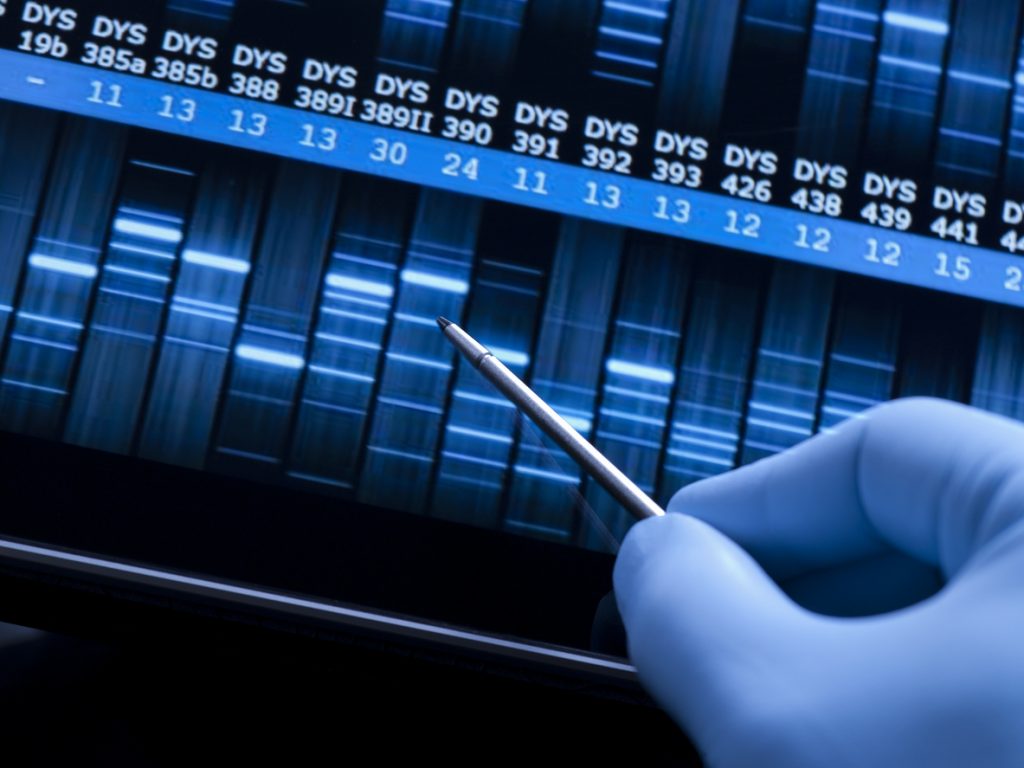Is it nature or nurture? That was the theme of a recent Café Scientifique in Toronto, hosted by the Canadian Institutes of Health Research (CIHR). Three experts talked about the field of epigenetics and how the ‘nature or nurture’ debate is a futile argument.
Recent spectacular advances in genetic research may make you think scientists are on the brink of solving the whole puzzle about what makes us human. Today supercomputers can sequence billions of DNA molecules at once. The cost to sequence an entire genome now stands at about $2,000-4,000, significantly lower than the cost of several hundred million dollars in 2001 when the Human Genome Project was just beginning.
Researchers recently sequenced an entire family’s genome and learned that the son does not carry a gene that increases the risk for developing dangerous blood clots in the future yet the daughter does. By running the daughter’s genetic information through a drug database, her optimal treatment for the future, should she need one, is already identified.
In the near future, we could all have our genomes sequenced and that information could become a standard part of our personal health records. But will having our DNA on our smartphone tell us what our destiny is?
Not by a long shot.
Our genome contains the entire record of our selves. But it is the epigenome that tells the genes whether to switch on or off, by adding or removing chemical tags.
“This is really very novel, to think that our DNA is sitting around in our early life, waiting to get experience, and because of that experience, more protein or less protein is being made. We now understand the biological mechanism for how that happens,” said Marla B. Sokolowski, PhD, FRSC, Canada Research Chair in Genetics and Behavioural Neurology and Professor and Academic Director at the University of Toronto.
“Think of DNA as books in a library. That library is not particularly useful until you read those books. So the DNA is sitting there in the cells but when there is an experience that that individual has, then that DNA can be read. It can be opened up and then the gene can be expressed. In the case of epigenetics, there are proteins that interact with the DNA that determine if it can be read or not. So if a child grows up in a very stressful environment, the genes that are important for coping with stress get wrapped up in those proteins and so they cannot be expressed. And that’s what is meant by epigenetics,” said Dr. Sokolowski.
Dr. Sokolowski discussed the groundbreaking rat studies by Michael Meaney, Moshe Syzf and Gustavo Turecki, Ph.D’99 at McGill, showing that when a mother rat licks her babies, a gene that decreases the number of stress hormones that get released gets turned on.
Dr. Sokolowski spoke about her current CIHR funded study about mother-infant interactions, which seeks to find how those interactions vary depending on whether the mother had a history of abuse. Everyone has one of two forms of a gene that controls how much serotonin, the major chemical responsible for regulating mood and emotion, is transported from one place to another in the brain. But that gene may not always be expressed if epigenetic tags have been added from abusive experiences.
Dr. Rosanna Weksberg spoke about how environmental factors can impact on how genes are expressed as early as when new life is first implanted. She cited the case where Danish mothers who were 0-10 weeks pregnant during a famine delivered very low birth weight babies that even 60 years later carried different growth factor marks on their genes compared to those who were not affected by the famine. Dr. Weksberg is Staff Physician with Clinical and Metabolic Genetics at The Hospital for Sick Children and Professor, Pediatrics and Molecular Genetics at the University of Toronto.
Dr. Albert Wong talked about his research which hopes to find potential drug treatments that could help prevent the expression of strong, inherited susceptibilities for schizophrenia and depression, by acting on the epigenome. Dr. Wong is Research Scientist, Neuroscience Division at the Center for Addiction and Mental Health (CAMH) and Associate Professor, Psychiatry and Pharmacology at the University of Toronto.
So, is it nature or nurture? The answer is ‘both,’ right down to our genes.



This is absolutely fascinating. As an adoptee, I have often wondered how much of “me” is attributable to genetics, and how much is a product of the environment I grew up in. This explanation offers interesting food for thought.
Thanks Kirsten. I find the whole topic intriguing too. While our DNA is sitting waiting to be read, it’s optimistic to realize that we may be able to have an impact on whether susceptibilities are expressed, by managing exposure to environmental factors, and by trying our best to live a healthy lifestyle.